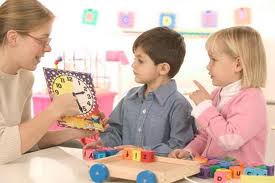Education and Childcare Workers
A worker's first duty is to the children or students in his or her care. In the provision of first aid support, this means the worker:
-
 Provides basic first aid
Provides basic first aid
- Is familiar with individual health support plans for children or students with individual first aid needs
- Provides advice in the health support planning process so that time away from learning is minimised while not compromising standards of care
- Develops learning programs which accommodate health support plans. For example, if children have frequent hospitalisation due to asthma or diabetes management, staff can work with families and health service providers to maintain continuity of curriculum as well as care plans and provides first aid in ways which enable children and students to learn and be part of the process
- Reports to parents and guardians, as a matter of priority, any observations which could indicate health-related concerns
- Delivers curriculum that supports safe and effective provision of individual and community first aid. This means, in part, that care should be taken when a child or student has a particular first aid need. Any curriculum dealing with that condition should be delivered in a one-step-removed and sensitive manner
Staff assisting teaching and childcare staff should:
- Undertake basic first aid duties, including responsibility for first aid facilities, preparation of accident reports and dealing with matters involving simple hygiene
- Support team approaches in individual health support plans
- Assist with record keeping
School or governing council members, management committee members and other adult volunteer workers
School or governing council members, management committee members and other adult volunteer workers can ensure they:
- Are informed about, and support implementation of, safe, effective and consistent first aid procedures
- Maintain confidentiality in situations in which parents, guardians or
- Adult students have released health information to adults who are
- Not employed as care providers or school staff. This can occur when volunteers have a supervisory role (for example, as a sports coach or a learning assistance program worker)
Planning for a predictable individual first aid need
Some children and students have predictable first aid needs. This is often associated with a diagnosed health condition for which standard first aid is adequate. For example, some children have a history of asthma or mild allergic reaction that can be managed via a standard, basic first aid response.
A few children and students will have a predictable first aid need that falls outside the scope of basic first aid training; for example, administration of rectal diazepam as part of seizure management. In these circumstances it is the responsibility of the worksite manager or home-based care provider to:
- Request that the parent, guardian or adult student obtain a health care plan written by a medical practitioner
- Use the information from the doctor to document, with the family or adult student, a health support plan
Is the first aid PLANNING provided by the doctor the safest and most relevant procedure for a care and education setting?
Sometimes a first aid plan developed for the family is not the most effective strategy for a care and education service. For example, after discussion about the training and safety implications of the setting, it might be negotiated to call an ambulance instead of undertaking a complex or invasive first aid response.
Is the first aid procedure as simple and easy as possible, for the child or student and the staff?
For example, it is much easier to manage medication for asthma via a puffer and spacer rather than a nebuliser; it allows independence and far less disruption to routine, so is generally preferable, so long as safety is not compromised.
How can the first aid support be planned to respect the Childs or student's dignity, privacy, safety and learning?
For example, if a child or student has seizures and is sometimes incontinent, this should be anticipated and plans made to handle the situation in a way which maximises the child's or student's privacy, dignity and safety.
How will the health support plan be monitored and reviewed?
For example, what records will be kept and shared of first aid interventions? How will staff maintain necessary skill levels, especially if they are rarely required to enact a plan? How will the family and staff monitor their confidence to act as agreed via the health support plan?
Monitoring strategies can include arrangements to meet regularly (for example, every three or six months) to exchange written records of first aid interventions (for example, seizure log to be sent home weekly); or to meet after any first aid intervention (for example, administration of adrenalin for an anaphylactic event).
Critical incident management
Any first aid intervention should be recorded in the first aid log.
An accident and injury report must be completed, as required by the employer, when a child or student is hospitalised or other complications are anticipated.
A critical incident report must be completed, as required by the employer or licensing authority.
Education and childcare services cannot be expected to prevent all first aid emergencies. Their role is to:
- Create safe and supportive learning environments
- Where relevant; for example, an increase in the use of asthma reliever medication or an unusually high incidence of tripping or falling over
- Develop a health support plan for any predictable and individualised first aid need
- Seek medical assistance in an emergency
 Provides basic first aid
Provides basic first aid Provides basic first aid
Provides basic first aid